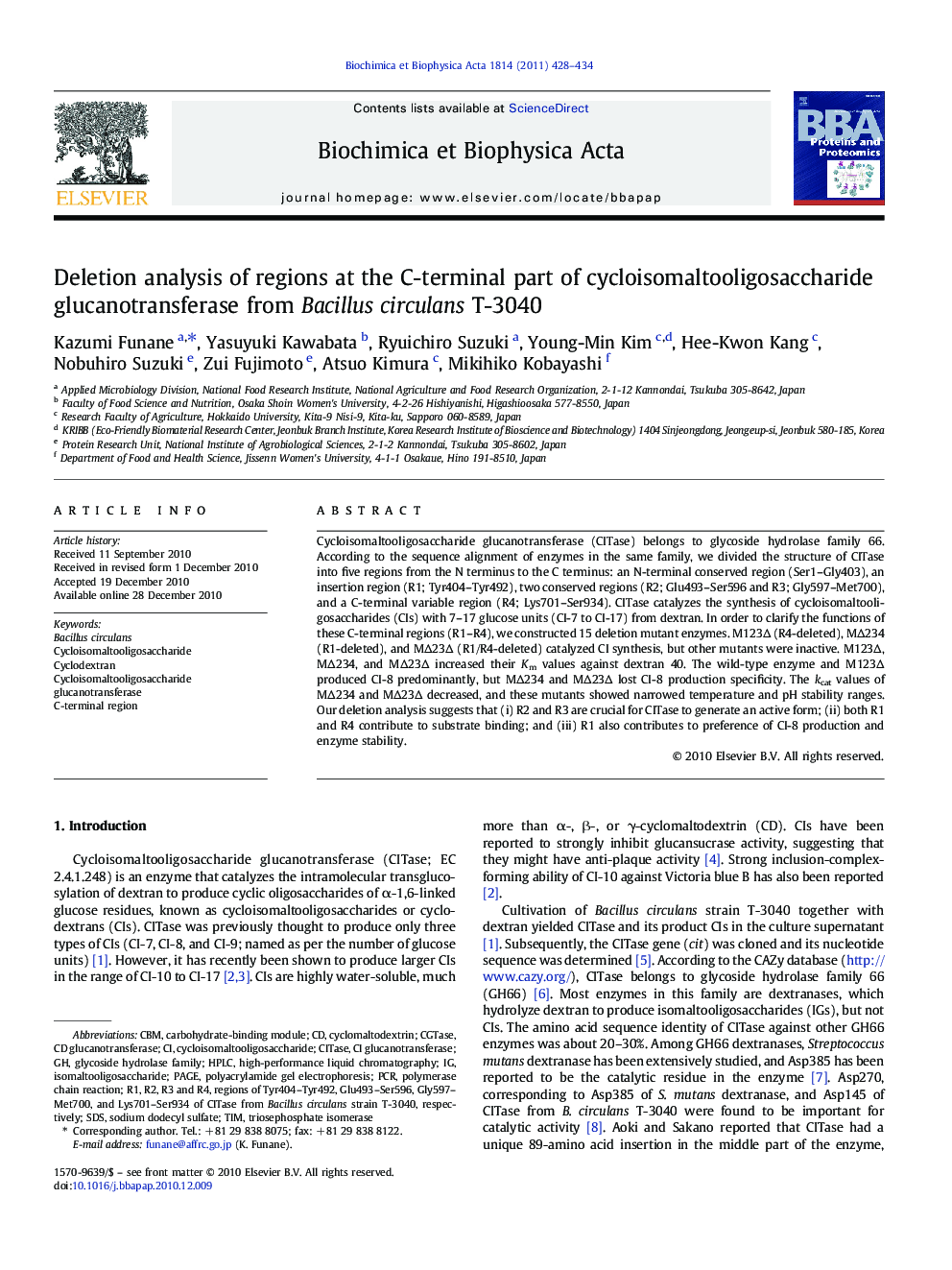| Article ID | Journal | Published Year | Pages | File Type |
|---|---|---|---|---|
| 1178812 | Biochimica et Biophysica Acta (BBA) - Proteins and Proteomics | 2011 | 7 Pages |
Cycloisomaltooligosaccharide glucanotransferase (CITase) belongs to glycoside hydrolase family 66. According to the sequence alignment of enzymes in the same family, we divided the structure of CITase into five regions from the N terminus to the C terminus: an N-terminal conserved region (Ser1–Gly403), an insertion region (R1; Tyr404–Tyr492), two conserved regions (R2; Glu493–Ser596 and R3; Gly597–Met700), and a C-terminal variable region (R4; Lys701–Ser934). CITase catalyzes the synthesis of cycloisomaltooligosaccharides (CIs) with 7–17 glucose units (CI-7 to CI-17) from dextran. In order to clarify the functions of these C-terminal regions (R1–R4), we constructed 15 deletion mutant enzymes. M123Δ (R4-deleted), MΔ234 (R1-deleted), and MΔ23Δ (R1/R4-deleted) catalyzed CI synthesis, but other mutants were inactive. M123Δ, MΔ234, and MΔ23Δ increased their Km values against dextran 40. The wild-type enzyme and M123Δ produced CI-8 predominantly, but MΔ234 and MΔ23Δ lost CI-8 production specificity. The kcat values of MΔ234 and MΔ23Δ decreased, and these mutants showed narrowed temperature and pH stability ranges. Our deletion analysis suggests that (i) R2 and R3 are crucial for CITase to generate an active form; (ii) both R1 and R4 contribute to substrate binding; and (iii) R1 also contributes to preference of CI-8 production and enzyme stability.
Graphical abstractFigure optionsDownload full-size imageDownload high-quality image (27 K)Download as PowerPoint slideResearch Highlights► The C-terminal part of cycloisomaltooligosaccharide glucanotransferase (CITase) was divided into four regions, R1, R2, R3, and R4. R2 and R3 were crucial for forming enzymatically active CITase. R1 and R4 regions were shown to be carbohydrate-binding modules. R1 was demonstrated to be a structural element for substrate binding, control the size of producing cycloisomaltooctaose production (CI-8), and contribute to the stabilization of the enzyme.
